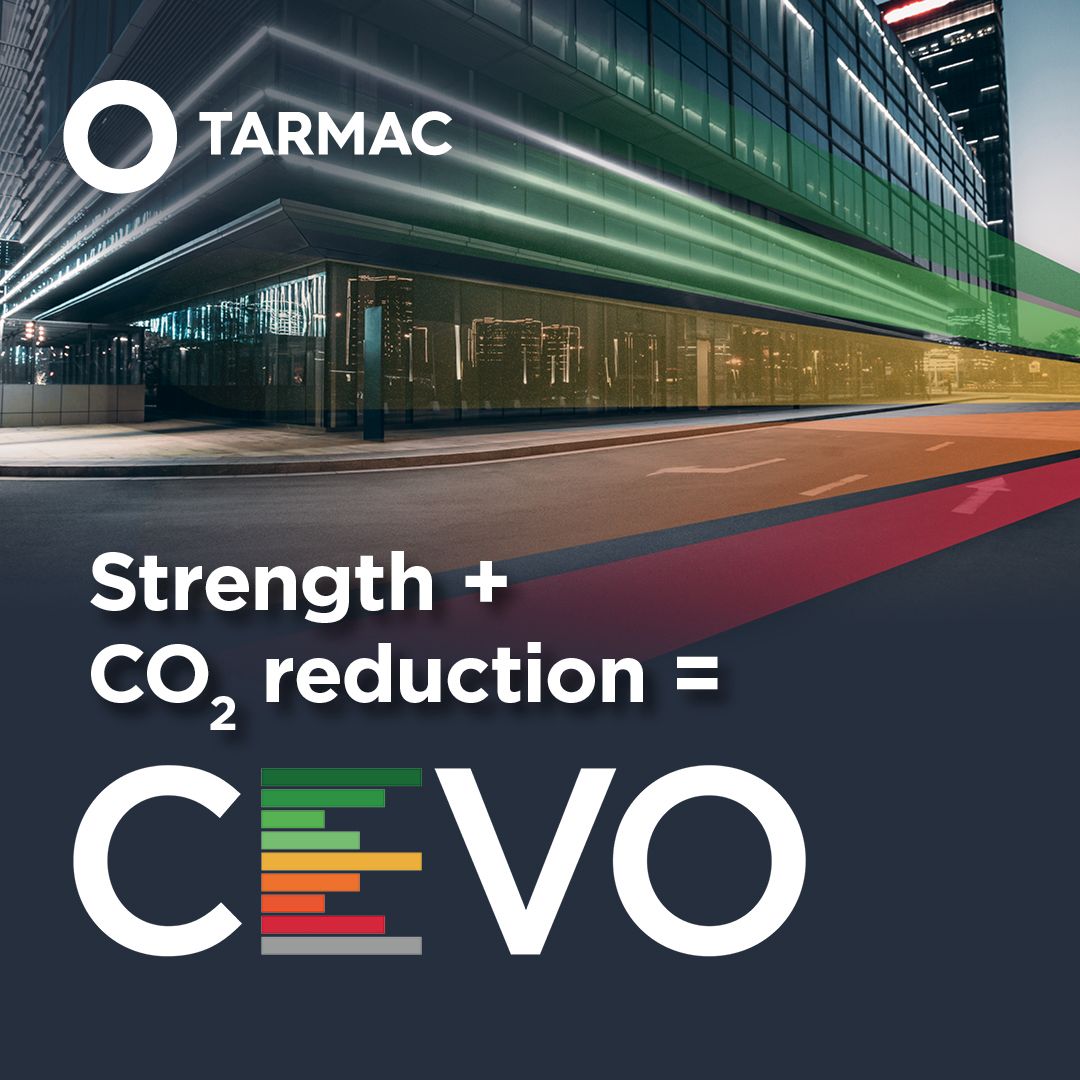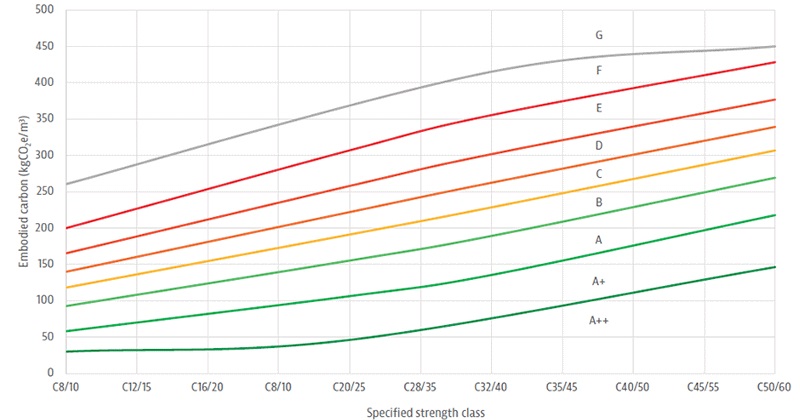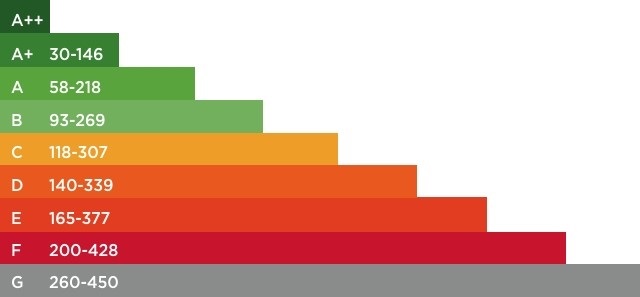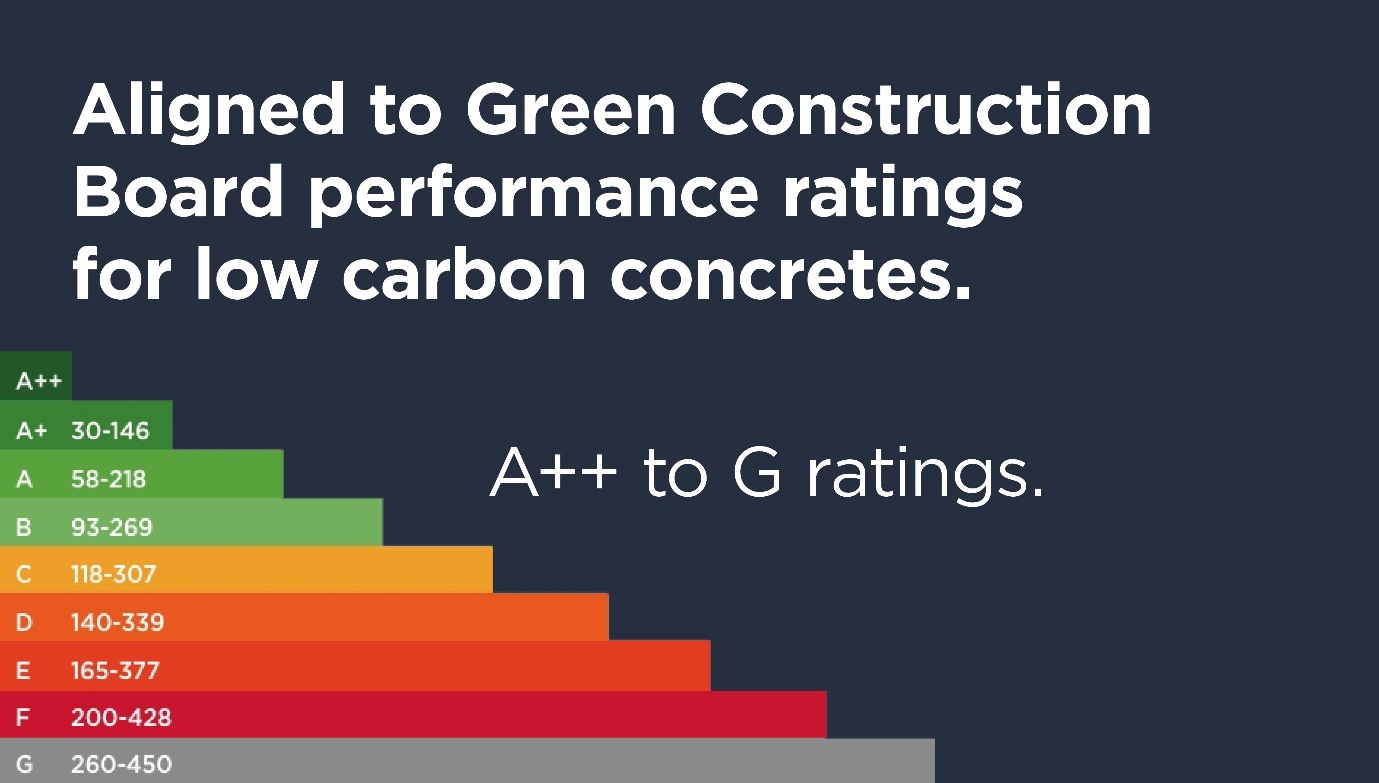CEVO a concrete evolution

Low carbon concrete is the term given to the latest design concretes that are progressing concrete’s transition towards net zero targets.
Following years of trials and advances in concrete technology CEVO low carbon concretes deliver simple solutions to making better material choices. They offer low carbon alternatives to traditional concretes.
CEVO from Tarmac, is a commitment to supply concretes that offer transparent carbon savings and easy to understand performance grading based on the amount of carbon taken out of the design using replacements, limestone fillers or an Alkali Activated solution.
The concrete range is aligned to ratings published by the ICE, endorsed by the Green Construction Board in the Low Carbon Concrete route map. A++, B, C to G gradings similar to efficiency bars that we see on electrical items across our daily lives.
Using this system to select the carbon reduction required means as new materials science offers improved new low carbon concretes, we simply align the product to the grading system. Low carbon concretes made simple.
What is Low Carbon Concrete?
Low carbon concrete is a type of concrete that uses alternative materials or processes to reduce its carbon footprint.
Most recently, the update to the BS8500 British concrete standard allowing Portland Limestone Cements (PLC) to be used in combination with GGBS and fly ash has been a major focus in our concrete solutions evolution. Essentially, PLC cement allows up to 20% of the cementitious elements to be limestone filler, which replaces clinker, lowering the carbon emissions from cement. Having run full-scale demonstration projects with key customers, Tarmac has actively planned a full roll out across our national manufacturing capability over the next 18 months.
Additionally, we can now supply an alkali-activated material system (AACM). This product has also been used in full-scale demonstrations across the UK in the past two years, including by National Highways on a project on the M42. The next step is for appropriate standards to be developed to allow wider use of this AACM product, which has a much lower carbon footprint.
In 2024, we expect to start replacing CEM I 52,5N (PC) volumes, with CEM II A-LL 52,5N (PLC). This is a UKCA-marked cement, with limestone filler already built in, which can be used under the new BS 8500 standards. The expectation is that CEM II A-LL will have equivalent performance, so can be a permanent carbon-cutting replacement.
Industry-aligned low carbon/net zero concrete supply

We believe that a zero-carbon future for concrete can only be achieved from an accurate starting position. That’s why we have adopted the Low carbon concrete route map rating classification.
Concretes are graded by strength properties and then banded. Just like energy ratings the carbon performance is easy to understand and visually represented in a universally recognised benchmark.

At Tarmac, when targeting carbon reductions, we are optimising all areas of manufacture, material selection, delivery, installation and reuse to help achieve 2050 targets as well as the more immediate commitment to reduce absolute CO2 emissions across the business by 30% by 2030*
(*This target, from a 2021 baseline, is supported by a series of Science Based Target Initiative (SBTi) validated targets).
Calculate your low carbon concrete foot step:

For further information of low carbon concrete, engineered solutions visit tarmac.com/low-carbon-concrete or scan our QR code:







